JING ART 2022: Online Viewing Room
VIP Preview
2022/06/30 - 2022/07/02
General Admission
2022/07/03 - 2022/07/30
CAO Zaifei

Looks Beautiful 看上去很美, CAO Zaifei 曹再飞, 2021. Oil on canvas 布面油画, 80 × 100 cm
CAO Zaifei said, "In my life, I am a simple and easy-going person, often accommodating, compromising, and even incompetent with the world, but in art, I like to smash myself and even don't care about others. I have been fighting alone for a long time, free from all social groups. I formed my unique perspective and thinking, not only maintaining rational restraint but also fond of mysticism, looking for a balance between seriousness and irregularity. The subject matter is all well-known statues, famous paintings, and everyday things. They changed their original meaning by my artistic language. For me, the simpler the painting language is, the better. The paintings are mixed with blunt and clumsy, a bit of FanWei's rustic humor style, and also with a sense of joy."
CHANG Ling

Home In The Forest 3 林中之家 3, CHANG Ling 常陵, 2020. Oil on canvas 布面油画, 129.5 × 129.5 cm
This piece of work is from CHANG Ling’s Illusion Society series. Illusion Society is a continuation of CHANG Ling’s preoccupation with society’s realities, while also representing a deepening of exploration into such realities – an epochal illusion borne of CHANG Ling’s accumulated emotions and memories. Through the Illusion Society series, CHANG Ling raises and practices “precision” in art. He encourages creators to abandon the constraints of logic, to view art as an externalization of the spiritual and an unveiling of emotion.
GUO Haiqiang

2021.6.5, GUO Haiqiang 郭海强, 2021. Hemp fibre, branch and oil on canvas 布面油彩, 树枝和麻丝, 90 × 138 cm
GUO Haiqiang said, “I like to temper the language of painting through sketching, and then by incorporating my experience with sculpture, the composition exudes a sense of body and material. In bringing together color and shape through this most humble and direct methods, traditional techniques are integrated with a contemporary understanding of painting. I pass through each season of the mountains, painting the warmth of spring, the summer sun, the chill of autumn, and the retiring winter. Day after day, I labor as my mother and father labored all their lives in the earth of those mountains.”
HU Zi
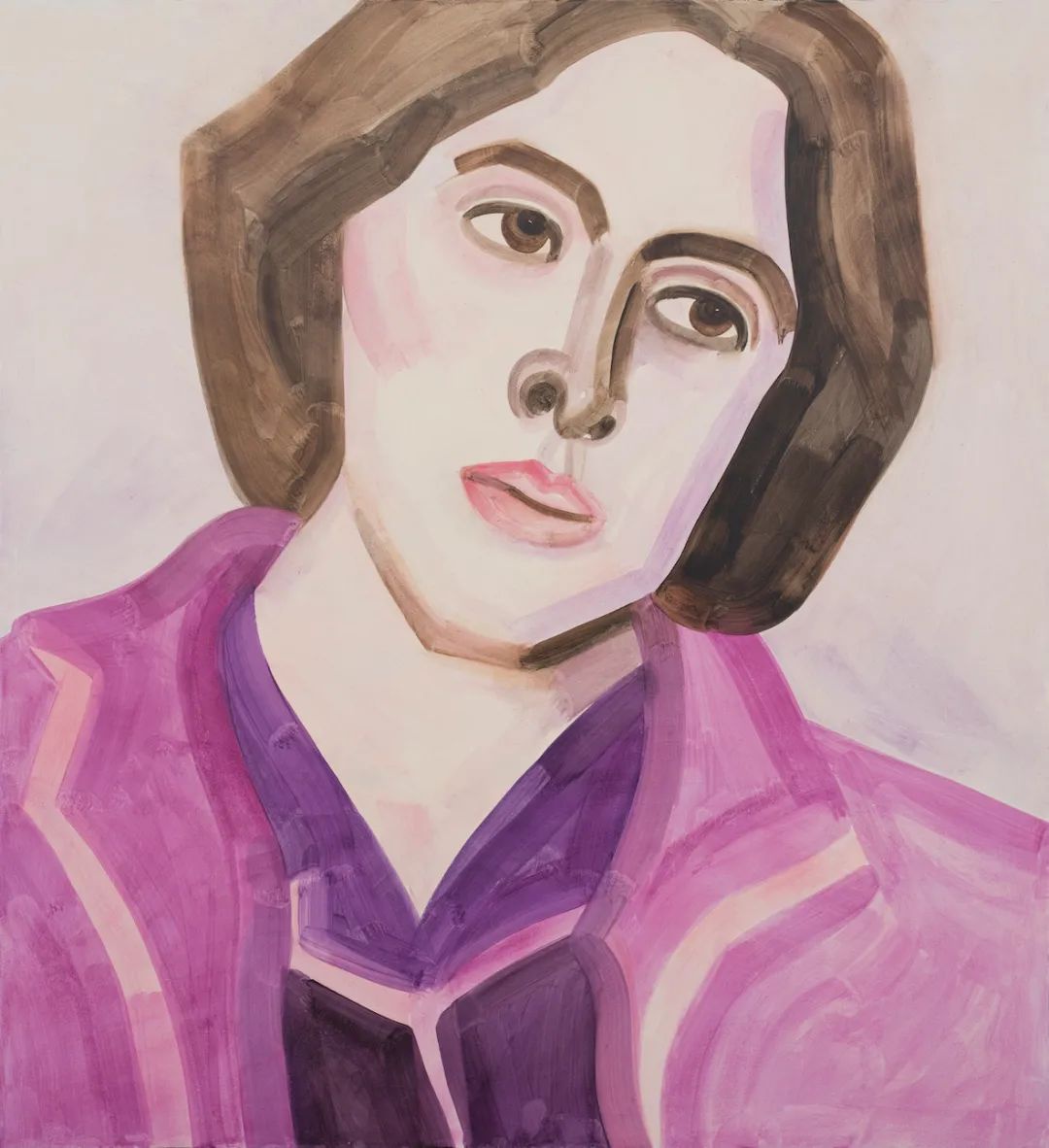
Oscar Wilde, HU Zi 胡子, 2016. Oil on board 木板油画, 60 × 55 cm
“HU Zi’s lines are angular, and straight forward. The jagged-edged outlines of her subjects’ physical features reinforce the dark sides of their personalities. HU Zi’s renderings of these icons engage in a sort of ‘schema correction’ — to borrow a phrase from EH Gombrich--of western canonical images (the schema) that results in her own original, visual language (the correction). As Gombrich wrote in Art and Illusion, ‘The artist cannot start from scratch, but he can criticize his forerunners.’ HU Zi leaves plenty in her self-portrait for future artists to ‘correct’, as well as in her rectified portraits of historical icons from the 16th and 17th centuries. Light and darkness are as common to every period of human history as they are to each day and night — the Yin to the Yang. HU Zi’s latest body of work embraces the underlying bipolar nature of human existence as well as society’s need to whitewash its dark side. ” (Andy Cohen)
Kumi Usui
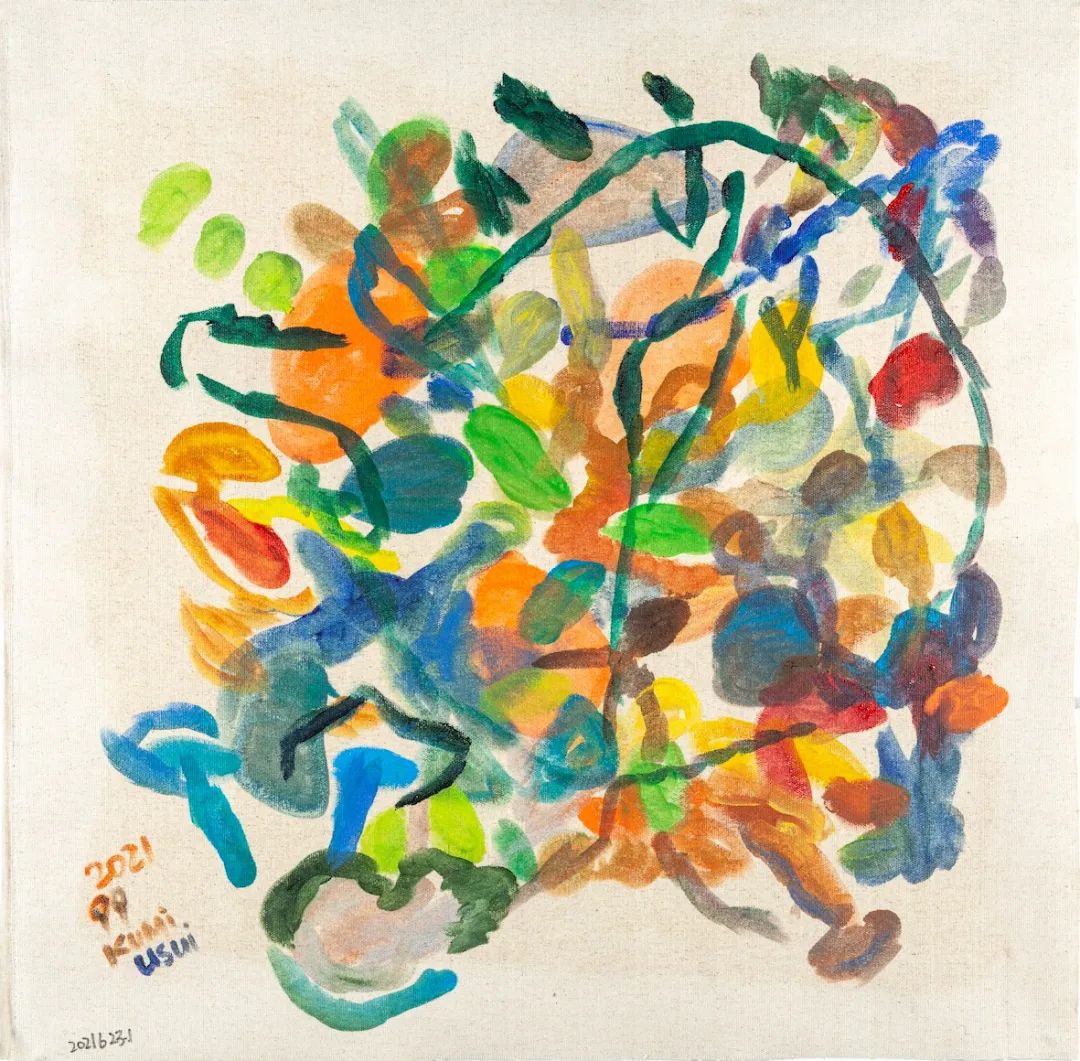
I’m Drawing & Drawing (on canvas) 2021 #2 埋头画画 (布上) 2021 #2, Kumi Usui 九九, 2021. Acrylic on canvas 布面丙烯, 69 × 73 cm
Kumi Usui’s work involves acrylic on paper, painting with mixed media, and installation. Her conceptual practice centres on everyday life and emotions. In the series of I’m Drawing & Drawing, she tries to return to the pure state by blurring the boundary between art and life when creating aimless paintings, questioning the meaning of drawing, the truth of life, and the connotation of self.
LI Shan
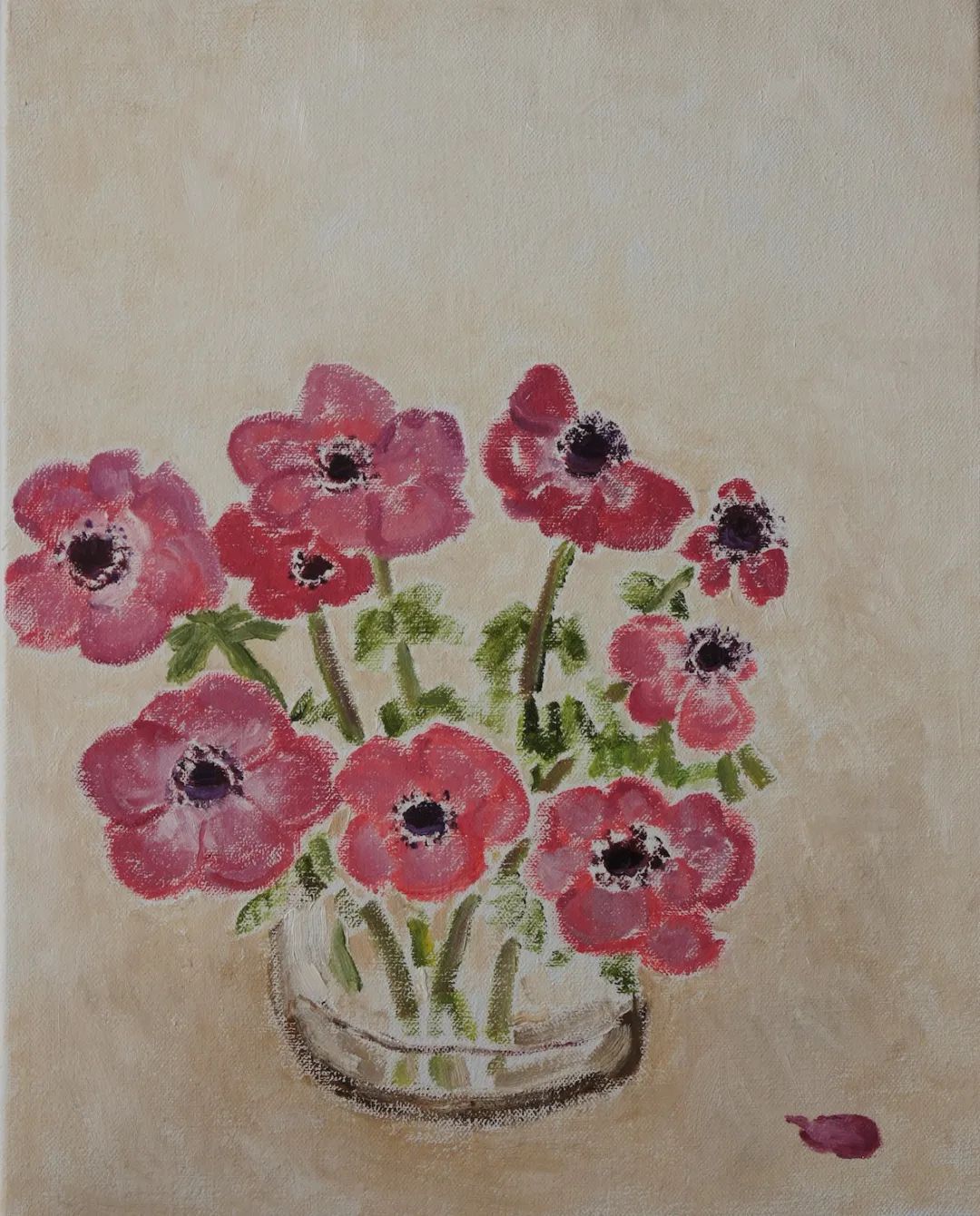
Faded Anemones 开败的银莲花, LI Shan 李珊, 2022. Oil on canvas 布上油画, 50 × 40 cm
As an ‘unofficial’ artist, LI Shan joined the underground exhibition of the painting society in 1974 and, later on, in 1979 a less clandestine, more openly public exhibition as a relatively relaxed political atmosphere began to emerge after the Cultural Revolution. Trees, flowering plants, and the landscape are among the motifs which the artist has long embraced; the elegant plum blossom or noble chrysanthemum as personal portraits or reflections on the artist’s own psychological reality. In the recent paintings of LI Shan, many of the compositions and scenes derive from the artist’s extensive travels abroad. Tranquil landscapes contrast the hustle and bustle of city life. Compared to her earlier works from the 1970s, the palette of LI Shan’s new paintings is brighter while retaining the nuanced singularity of her brushwork.
LIU Ren
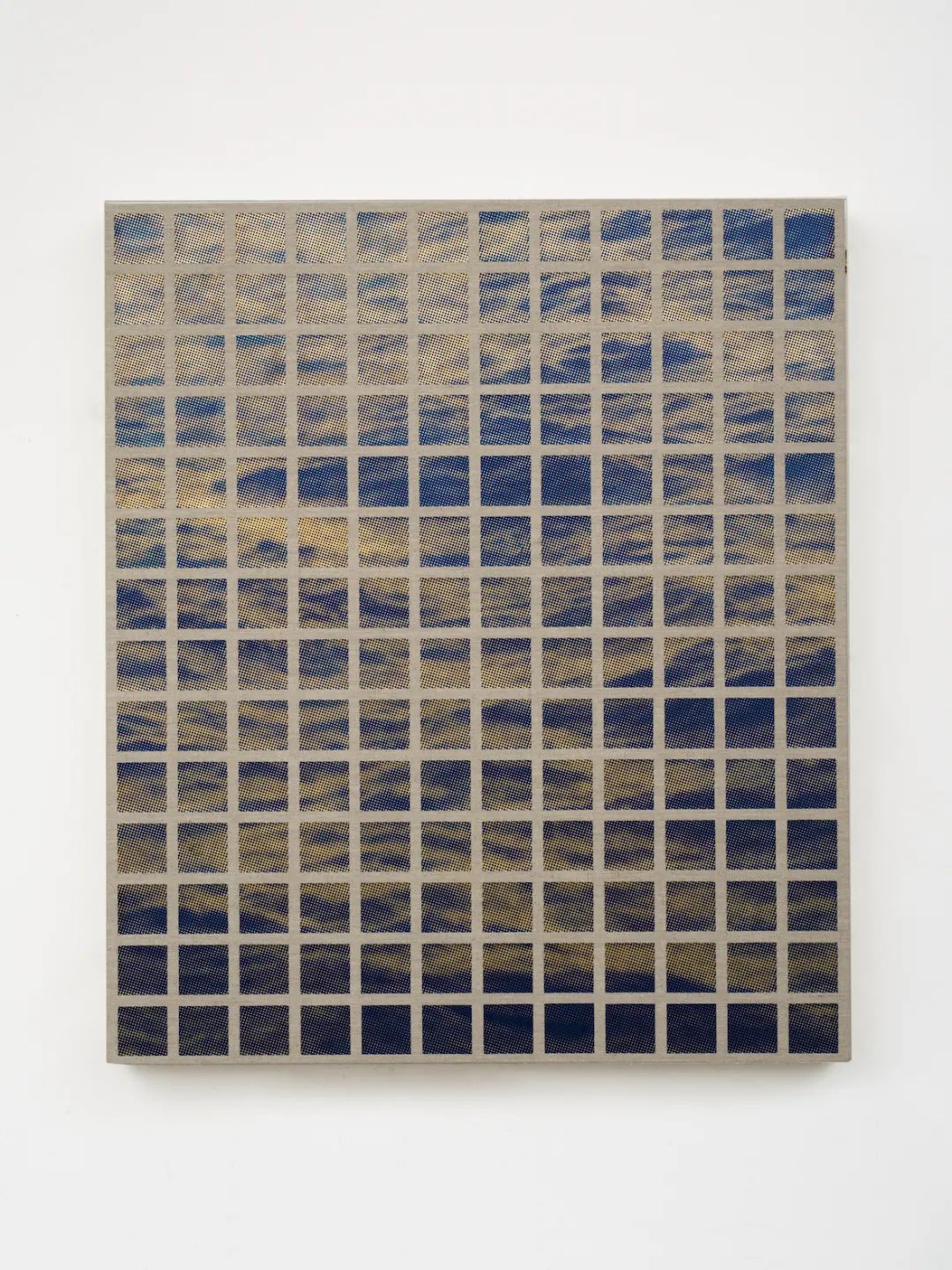
Inches of Time—202008091050 寸光阴—202008091050, LIU Ren 刘任, 2020. 24K gold foil, Screen printing ink, canvas 24k金箔,丝网油墨,画布, 58.2 × 50.4 cm
The poet Wang Zhenbai from the late Tang Dynasty once suggested the notion of time by the verses—“An inch of time is an inch of gold.” One inch on a side, all the squares foiled with gold are covered by the grainy and pixelated surface of the sea. The physical distance as measurable is applied to metaphorize the psychological distance as immeasurable.
LU Song
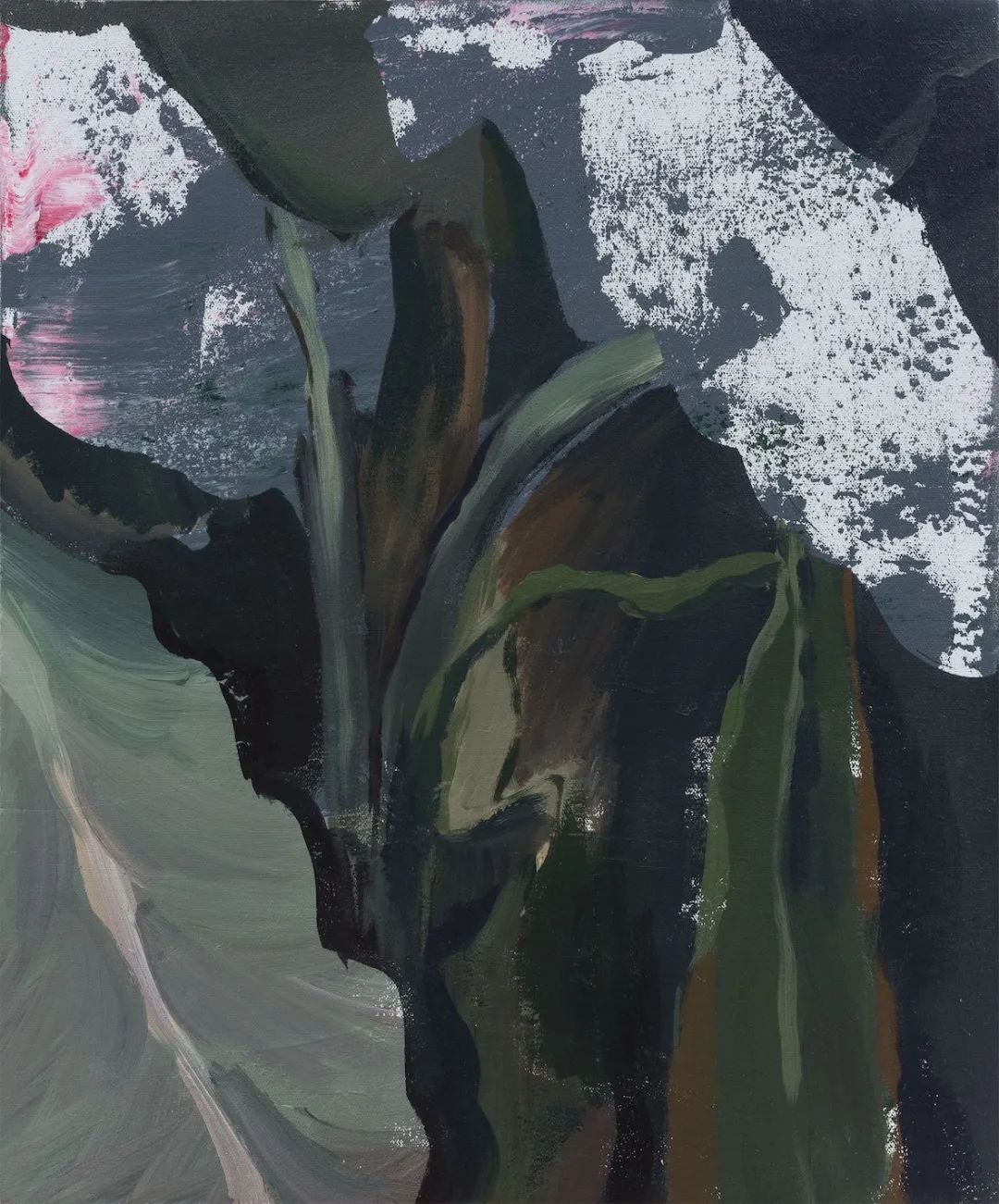
Foliage 2 叶子 2, LU Song 吕松, 2017. Acrylic on canvas 布面丙烯, 60 × 50 cm
By a deliberation separation and layering of colors, the artist dissolves the necessary boundaries between diverse situations, rendering a dramatic alienation effect. Shattered silhouettes of figures are entangled with wildly growing giant plants. It is hard to distinguish whether the artist is intuitively responding to the living environment where he inhabits or intentionally leading the audience to escape from the overwhelming mundane routines. Such a subject made up by the artist embraces a complex mode of ambiguity. The intricate ambience diffusing the canvases is both appealing and daunting. Moments of intimacy and distance are the episodes extracted from the conscious where the ideal of living might not exist.
QU Fengguo
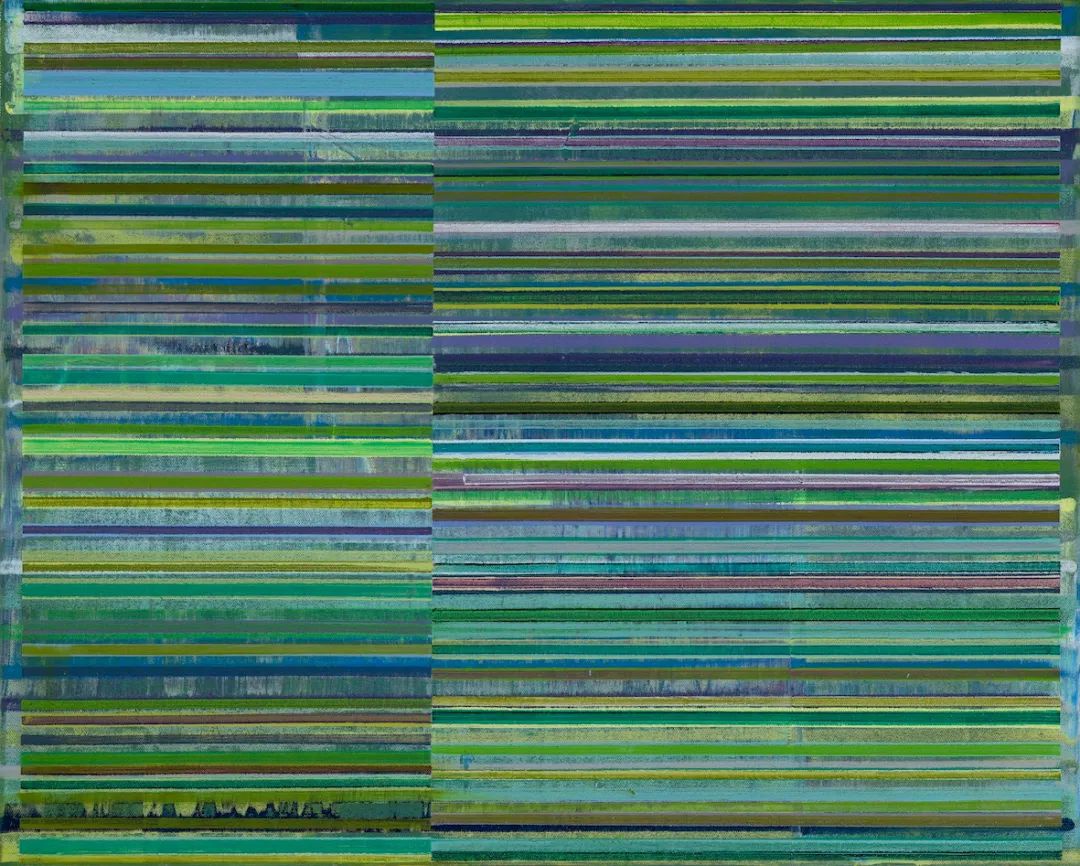
Spring Commences, Four Seasons 四季 立春, QU Fengguo 曲丰国, 2020. Oil on canvas 布面油画, 80 × 100 cm
“Four Seasons” by QU Fengguo stems from a sense of aesthetic judgment analogous to “mono- no-aware.” It is the unconscious capture of impermanence and ultimate emotions brought by the seasons as a natural kind. Seized with a sudden impulse and all the patience, the artist obtains extraordinarily deep insight and empathy into external objects that are changeable and unpredictable, as though the distance between persons and things is expanded into a fleeting moment. Abstraction is practiced as a habitus but not a scenario-based transcription in his composition. Though in recent practice of this series, the superposition of division and the division of superposition functions as a structural element occupying the very center of the image. A number of geometric motifs emerge, but the core of QU’s creative language is the disappearance of space and spatiality.
WANG Ningde

Form of Light Thicket 18231 有形之光 丛林 18231, WANG Ningde 王宁德, 2018. Wood frame, honeycomb aluminum panel, acrylic, clear lightbox sheet 木框, 蜂窝铝板, 亚克力, 透明灯箱片, 92 × 72 × 6.5 cm
WANG Ningde uses photographic processes without creating photographs by definition. The effect is closer to that of a camera obscura, an image or representation of reality hovering over reality itself. Furthermore, the gridded images, composed of hundreds of units, subvert the tendency of traditional photography towards the lone cropped image which we refer to as a photograph. WANG's method of composing these works eschews the chemical process of fixing an image to a surface, relying instead on an organized fragmentation of a singular image on a series of transparencies, which when exposed to a specific lighting, creates a composite shadow image. The end result is the artist quite literally drawing with light, creating ghostly images through a process that relies on both computers and the human hand.










